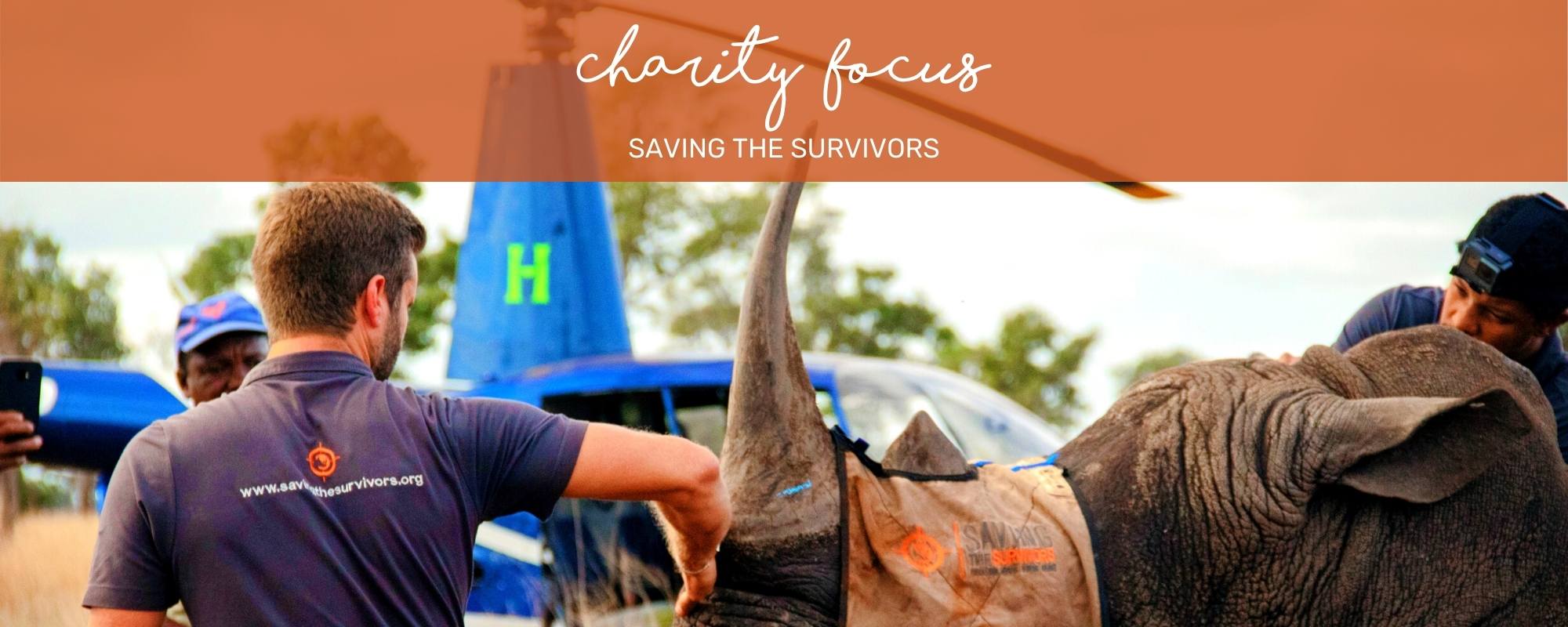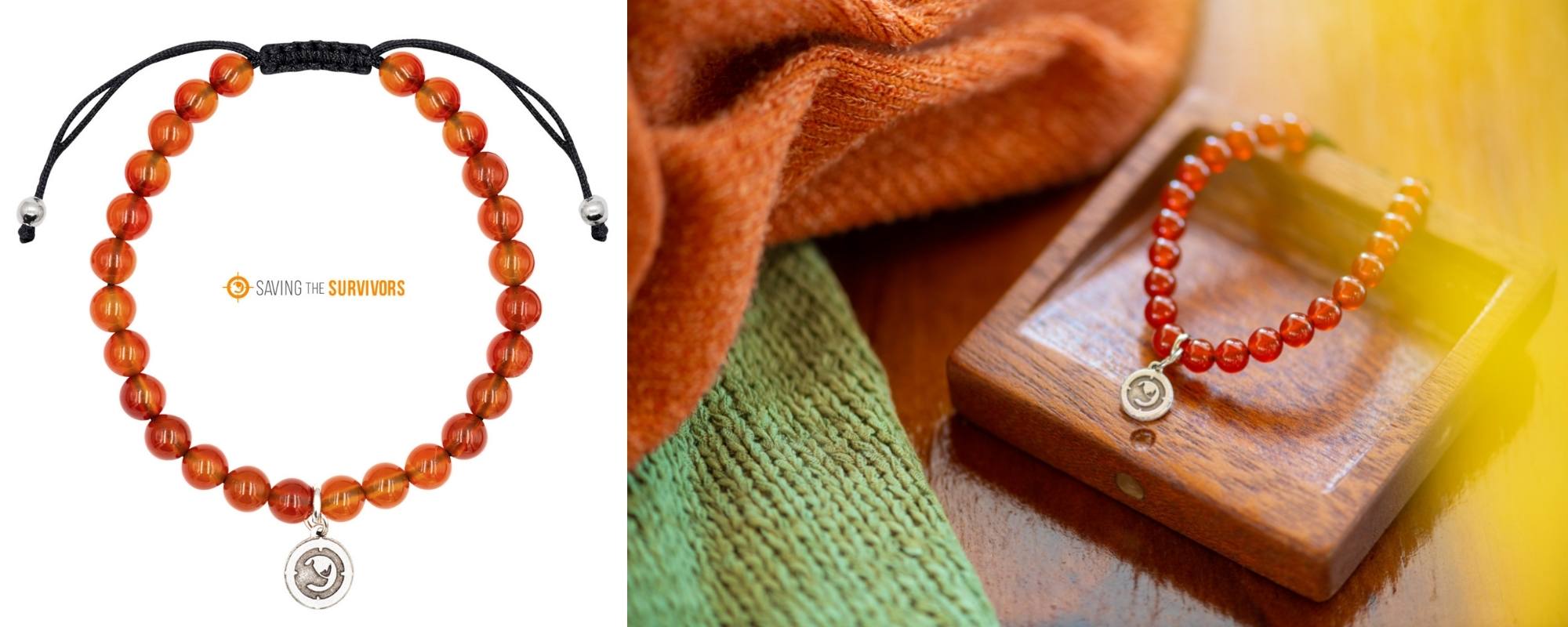15% OFF EVERYTHING UNTIL CHRISTMAS!

CHARITY FOCUS: SAVING THE SURVIVORS
Posted on
On Mission to Save the Survivors
We all know that the best-case scenario is for an animal to live a long and happy life unencumbered by humans; sadly, that’s often not the case.
Rhinos, lions, cheetahs and other animals are regularly poisoned, snared and poached.
Thankfully, our charity partner, Saving the Survivors, is on a mission to save the animals injured by these horrible acts.
To learn more about this organization, Taylor sat down and asked some questions with the Director of Saving the Survivors, Tristan Wood.
Read on to enjoy an exclusive Q&A session that will answer anything you’ve ever wondered about Saving the Survivors!

Can you tell me a little bit about why and how the organization began
Saving the Survivors began in 2012, and it was born specifically to respond to the high number of injured and poached rhinos in South Africa.
During the year 2010, we lost 426 rhinos, and in 2011, we lost 532 rhinos. Coupled to this, there were a high number of injured survivors, which either suffered from gunshot wounds, fractures or large facial wounds, where the horns were hacked off.
These numbers increased to over 1000 in 2012 and were sustained at that rate for five years after that.
Saving the Survivors was specifically started to deal with these injuries, but also simultaneously commenced research into the different injuries and how to treat them successfully, as this has never been published or done before.
Later on, we expanded our focus to include all endangered wildlife like elephants, lions, wild dogs, cheetahs and other African animals, and we also expanded into Mozambique alongside the Zambian National Parks Department.

Tristan, what is your background in conservation and/or animals
I am an equine surgeon and was qualified in 1991. I joined the University in 1998 and worked as a senior lecturer and equine surgeon in the Equine Hospital.
After a few years, I started getting more and more wildlife cases like rhino, elephant, sable, roan and wildebeest with injuries. I enjoyed working on them as it posed a new challenge to treat them successfully.
This eventually led to Saving the Survivors being formed in 2012. I left the University in 2016 to focus 100% of my time on Saving the Survivors.
Can you tell me about the process of finding and treating injured animals
We get contacted by either the owners of farms, game reserves and National Parks, or by the veterinarians that normally perform work in these areas. Saving the Survivors will then respond timeously and either drive to the place or fly if it is over a long distance.
However, the vets will often drive extended distances to get to injured animals e.g. 600 to 800 km.
One of the success stories must be Seha, an adult White rhino bull that was rescued in September 2016 with a massive, horrific facial injury where both his horns were removed with a chainsaw. We treated him successfully and he has even sired a calf last year.

What happens to rescued animals after they are treated?
If animals are not severely affected, they are treated after immobilization, and then woken up and returned to the bush.
Some animals like rhino which may be severely affected are transported to a boma and kept there until the treatment is finished and the animal has healed satisfactorily. They are then released again.
It is important that an organization does not become stagnant. We have grown considerably in size, especially since the end of 2016 when I left the University. One of our current directors, Mr. Paul Naden, has been instrumental in that growth.

How will donations from the sale of Wild In Africa bracelets benefit Saving The Survivors and why is funding so important?
Due to the fact that we are an NGO organization, we are heavily reliant on funding.
The organization has two major cost items, which are traveling to get to injured animals, which includes helicopter time generally, as well as expensive drugs and equipment that we use in treating these animals.
Saving the survivors is therefore extremely excited and grateful at the same time, about this beautiful Wild in Africa bracelet and how it is going to benefit wildlife in Africa! Thank you very much!”

Saving the Survivors Charity Bracelet
You can also get involved and show your support to Saving the Survivors by purchasing a Wild In Africa Saving the Survivors charity bracelet.
With each purchase of the Saving the Survivors bracelets, not only will you receive a meaningful and beautiful piece of jewelry, but you will also play an important role in saving injured African animals
Made from a sunny semi-translucent Orange Agate, the materials in this bracelet are thought to promote overcoming negativity and emotional healing.
50% of the purchase price is donated directly to the Zambian Carnivore Programme!

Written by Taylor Plate
Don’t miss out on future posts so be sure to sign up for our Wild Tribe (scroll below to sign up).
New products and discounts first!
RETAIL & STUDIO
The Farm House, R527
Hoedspruit LP South Africa
Whatsapp: +27 79 225 4988
contact@wildinafrica.store
. . . . . . . . .
HEAD OFFICE
65/2 Arbor Ave, Robina
QLD 4226 Australia
